COVID-19: Inside a Lighthouse Lab testing facility
12 June 2020
During the pandemic, UCL has been providing support to the UK Lighthouse Labs COVID-19 diagnostic lab network. Cancer researcher, Dr Victoria Begley, shares her experience of volunteering at one of the Lighthouse Labs in Milton Keynes.
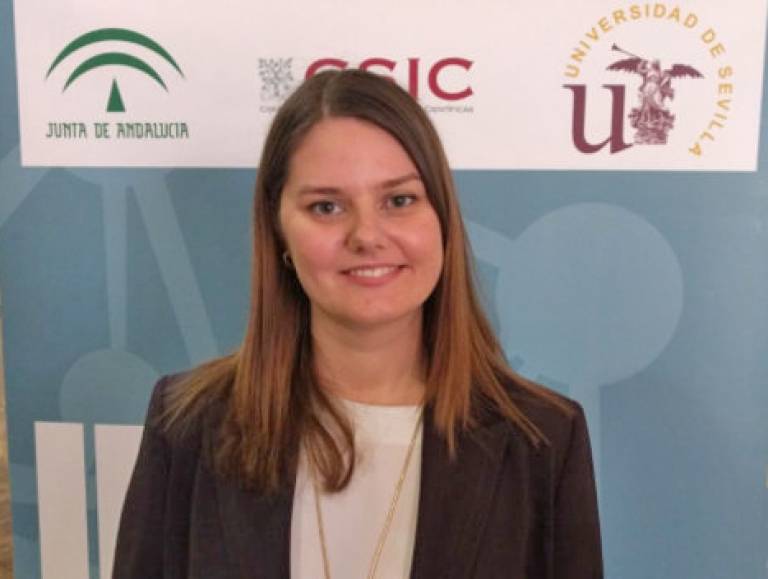
Dr Victoria Begley - Research Fellow in the Jenner Lab at UCL - has been volunteering at one of the UK’s Lighthouse Labs analysing samples taken from COVID-19 regional testing centres and keyworkers´ homes. Here, Victoria tells us more about what it’s like to be part of the mega-lab network and how she is balancing her research work with volunteering.
My whole experience began on Thursday the 2nd of April when I first volunteered to work in the lab at Milton Keynes. I had been working from home for a few weeks, since UCL shut its doors due to the pandemic, and like many fellow scientists, I felt like my lab skills were going to waste. I really wanted to help in the pandemic effort the best way I knew how: by contributing to the PCR testing efforts.
I was delighted when I got a quick response from the recruiting team telling me I had been selected to start right away at the Milton Keynes lab. I was excited and nervous the next day when I received my induction, and felt in awe when we were shown the labs we would be working in. These were much bigger than any lab I had worked in before, with liquid handling robots and dozens of qPCR machines. I knew UCL had donated lab equipment to the Lighthouse Lab Network, so I was happy to recognise one of the qPCR machines from the UCL Cancer Institute where I normally work.
Testing thousands of virus swab samples
I began my first shift a couple of days after and was trained both technically and in the procedure necessary for dealing with delicate COVID-19 swab samples. We were shown that much care is needed when handling these samples as each one represents a patient either fighting for their life in hospital or a key worker who could potentially go back to work if tested negative for the virus. The results of these tests could save lives and we are very aware of this. To ensure no mistakes are made, there is a system in place were two people work on the same samples together - four eyes are better than two!
The testing process was divided into three parts to make it more efficient and less prone to mistakes. Once in full PPE and under a biosafety cabinet, we first inactivated the virus in lysis buffer which also serves to liberate the viral genetic material (namely RNA) from its lipidic envelope. Then, we extracted RNA with the help of machines, and finally determined whether the viral RNA is present or not using RT-qPCR.
In the first few weeks, we managed to process around 1000 samples a day. Over the next couple of months, we trained up new volunteers, shifted to a more automated process and implemented a 24/7 operation in order to process tens of thousands of samples a day.
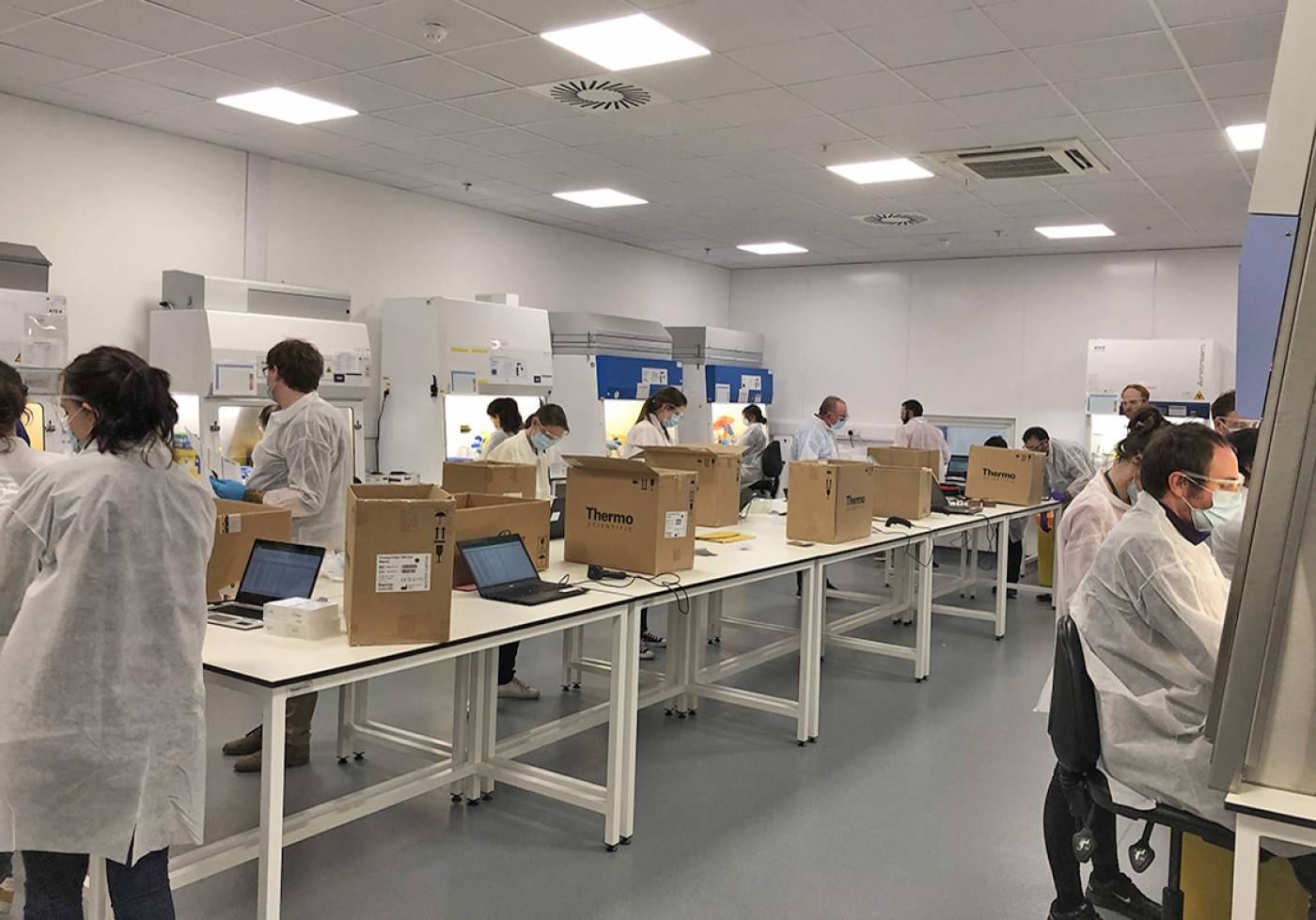
Staff working in the Milton Keynes Lighthouse Lab.
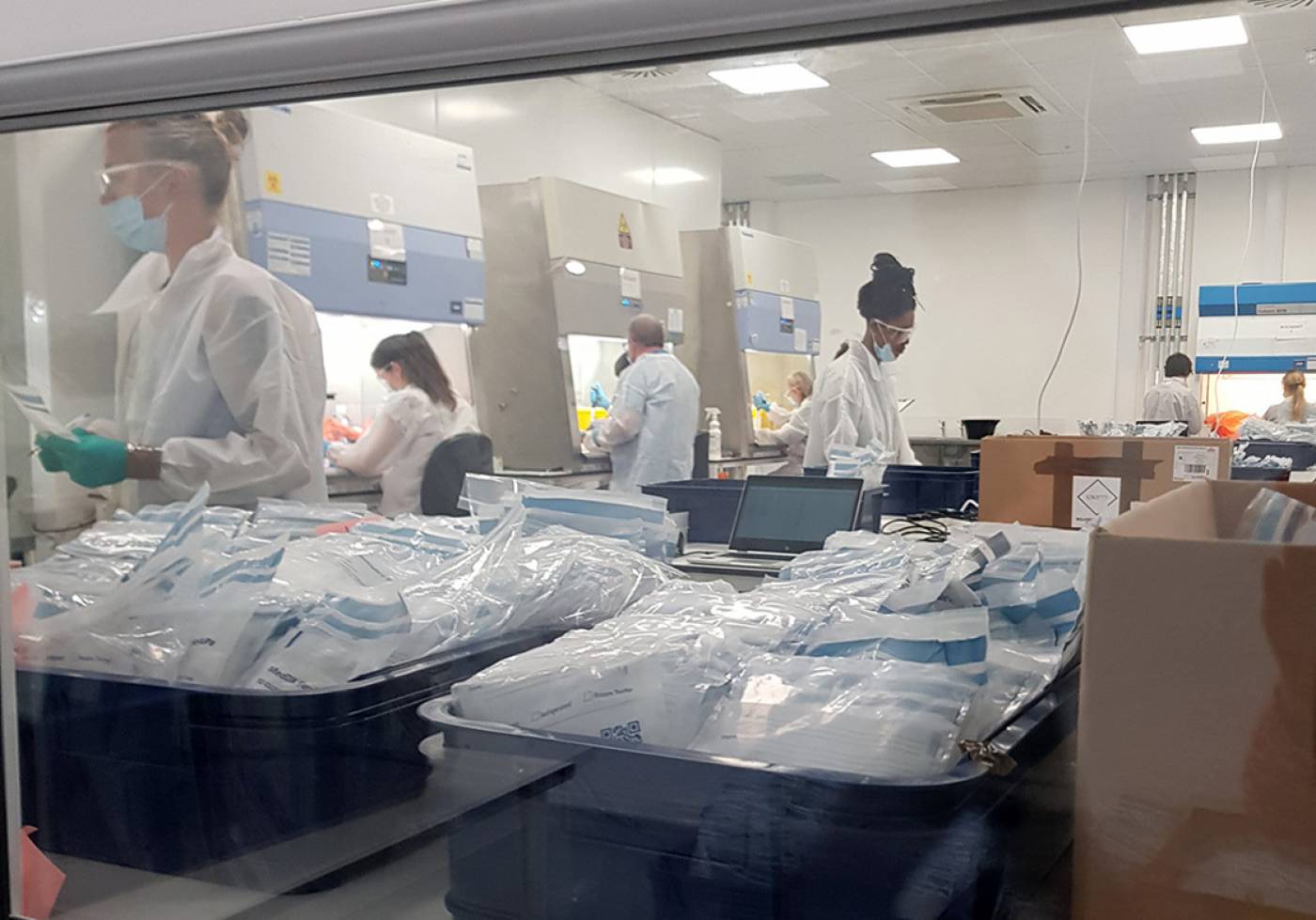
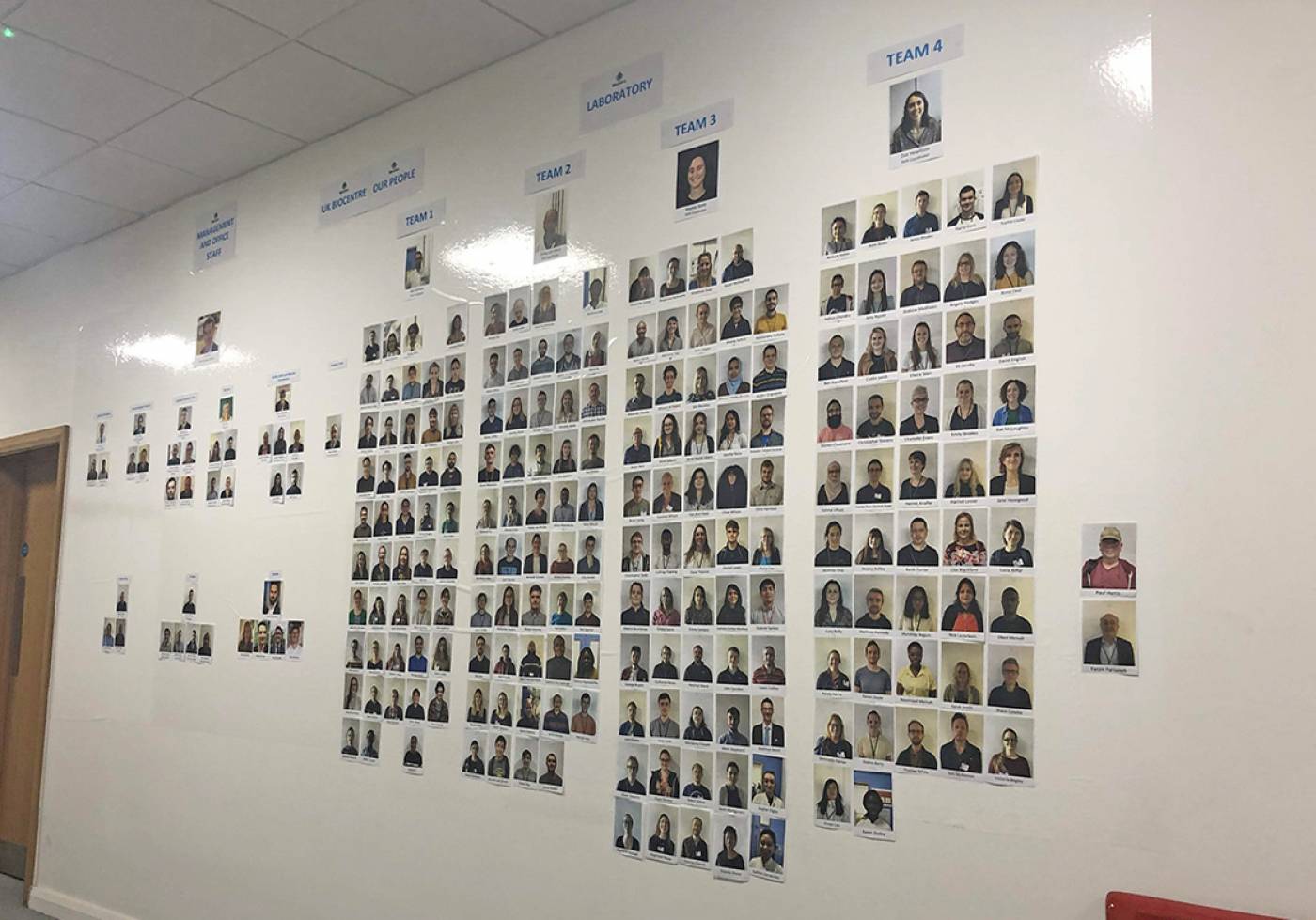
Teams of volunteers at Milton Keynes mega-lab
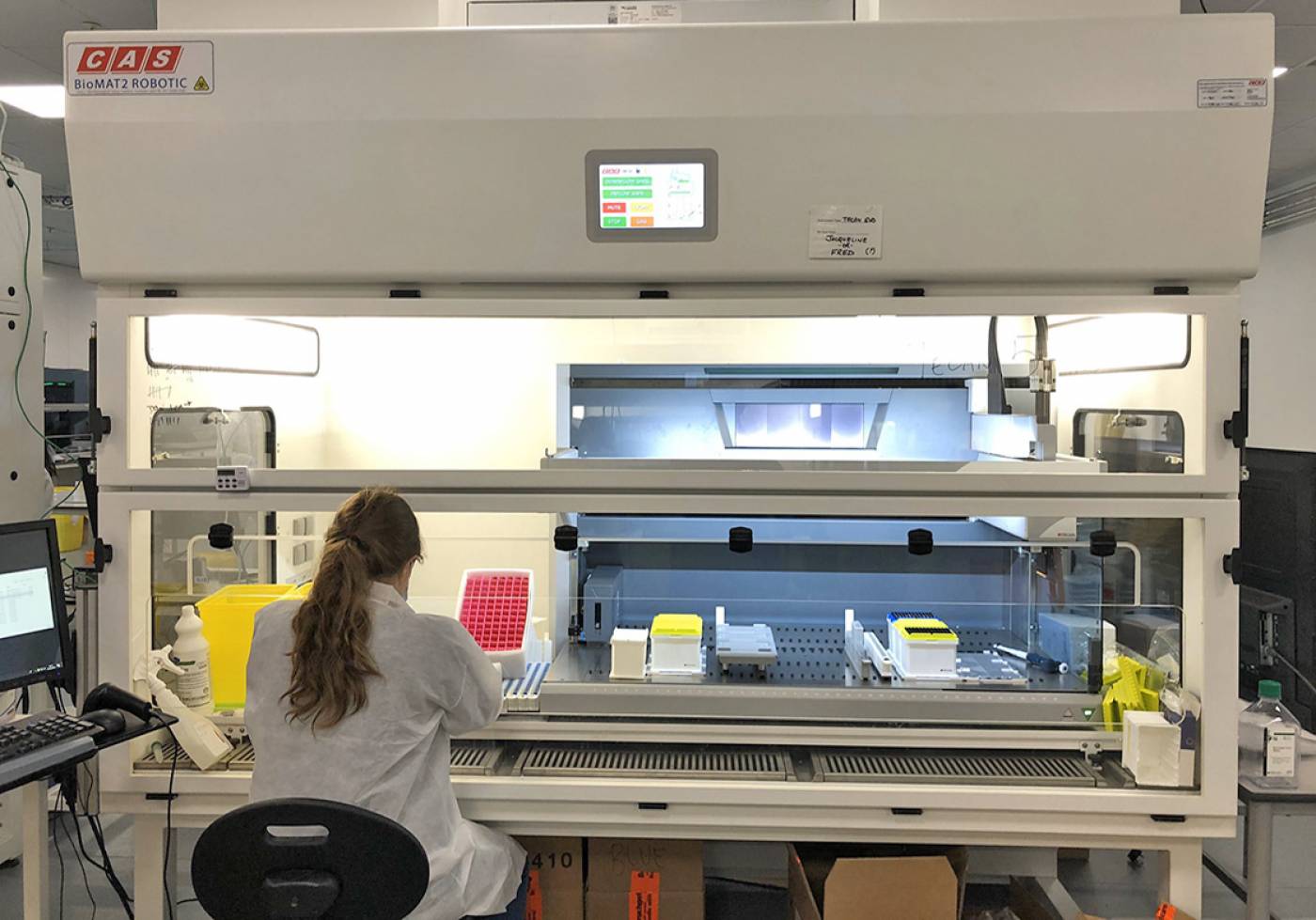
As a postdoctoral research associate in Richard Jenner's lab at UCL, I have ample lab experience, so was promoted to cabinet section lead where I helped take care of an amazing group of volunteers running the cabinets at maximum capacity.
Alongside volunteering, I have been preparing a paper for submission. My research is focused on the role of RNA in chromatin and transcriptional regulation. It was a little tricky to juggle my regular research with my volunteering role, especially when we ramped up to 12-hour shifts at Milton Keynes. So I needed to take a break from the mega-lab to concentrate on my research submission.
Now that UCL has started a phased opening of some of its buildings, it’s great to be back at my regular job working in the Jenner Lab. I'm proud of the COVID-19 testing work I was a part of and glad to have contributed to the response.
Further information
- Dr Victoria Begley academic profile
- Prof Richard Jenner Lab - Regulatory Genomics Research Group
- COVID-19 research at UCL
- Lighthouse Lab images credit: Tony Cox
 Close
Close

